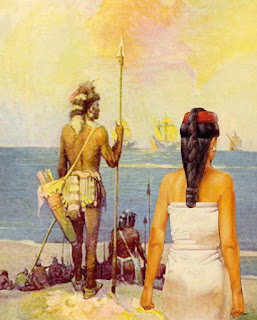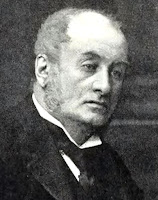In any writing, either intention or accidental, there are cues, keys or tip-offs that can lead the reader to a deeper understanding of the subject being presented. This can be found throughout the Book of Mormon relating to the geography or events being discussed.
Take for example, Nephi’s simple statement found near the beginning of his record: “And my father dwelt in a tent” (1 Nephi 2:15). First of all, there seems to be no apparent reason for the comment, coming between Lehi chastising his older two sons (verse 14), and Nephi describing himself in size and desire.
Why Nephi made that statement is unknown. However, whether intended or not, it tells us a great deal about Lehi if we are looking for clues to deepen our understanding or provide a more complete meaning to what we are reading. In the case of “living in a tent,” we need to combine this with “And it came to pass that he returned to his own house at Jerusalem; and he cast himself upon his bed, being overcome with the Spirit and the things which he had seen” (1 Nephi 1:7, emphasis added), and the parenthetical comment “my father, Lehi, having dwelt at Jerusalem in all his days” (1 Nephi 1:4), where both comments tell us that Lehi and his family had lived in their house outside of Jerusalem from the time Lehi was young. Thus the comment about living in a tent not only has to do with the fact that though having had a house as a family home near Jerusalem, he was now living in a tent in the wilderness “ 2 Nephi 5:7)
But the deeper meaning, and probably the most important meaning is that Lehi was at home living in a tent; he was familiar and comfortable living a Bedouin-style life.
There was no room in the city of Jerusalem for unnecessary equipment
That leads us to question, as numerous critics have pointed out—if Lehi, living in a house in Jerusalem all his days, why would he have tents, seeds and provisions sufficient for a lengthy trip into the wilderness.
Well, if he had lived in Jerusalem, where space was limited and houses barely had room for the necessities of living, including household stables for a sheep, goat, and donkey, and maybe a cow, there would be no room for the Bedouin-style tents that took three donkeys to carry. Nor would there be sufficient seeds to start a new life far from any previous agricultural growth, or traveling provisions, both food and kitchen equipment, as well as bedding for the entire family, blankets, cushions, etc.
Certainly, none of this could have been purchased, drawing attention to Lehi, who was being sought by those in the city in order to take his life (1 Nephi 2:1).
However, living “at” Jerusalem, not “in” Jerusalem, answers all those questions. On a farm outside Jerusalem, all of these extra items would be available (1 Nephi 2:4).
All of this becomes understandable by looking deeper into the single statement that “My father lived in a tent.”
In fact, Lehi lived in a tent for the next 8 years by the time they reached the seashore (1 Nephi 17:4).
Another example is when Nephi is told by the Lord to go up to a mountain, where he is told to build a ship. The first thing Nephi says after that pronouncement was: “And I said: Lord, whither shall I go that I may find ore to molten, that I may make tools to construct the ship after the manner which thou hast shown unto me? And…the Lord told me whither I should go to find ore, that I might make tools” (1 Nephi 17:9). Critics have asked, “How did Nephi know to make metal tools out of ore?” and Theorists claim that Nephi’s occupation was that of a blacksmith.
Neither are correct. While it is true that Nephi knew how to build a bellows (1 Nephi 17:112), it was just one of many skills a person living on a farm needs to develop in order to build or repair essential parts of the structures and equipment. In addition, while the Lord showed Nephi the design of the ship to be built, and how to work the timber different from the method then known and used, he would have had a rudimentary knowledge of construction. In fact, working on a farm requires that a person learn many necessary skills. This is borne out when Nephi’s grandnephew wrote: “We multiplied exceedingly, and spread upon the face of the land, and became exceedingly rich in gold, and in silver, and in precious things, and in fine workmanship of wood, in buildings, and in machinery, and also in iron and copper, and brass and steel, making all manner of tools of every kind to till the ground, and weapons of war” (Jarom 1:8). These areas were skills taught by Nephi to his people, “And I did teach my people to build buildings, and to work in all manner of wood, and of iron, and of copper, and of brass, and of steel, and of gold, and of silver, and of precious ores, which were in great abundance” (2 Nephi 5:15).
The problem lies in two areas: 1) People fail to look into the meaning of words, and 2) People make up their mind to a point or belief and then interpret words and phrases in the scriptural record or comment by a General Authority to support those beliefs.
However, many people ignore the scriptural references or try to bend or change them and their original meaning, or try to cloud the issue by introducing information that has nothing to do with the scriptural record, or they become so convinced of a particular location that they pass over all those references that do not agree with their location, or try to restrict the understanding and intent of the scripture to make it fit their predetermined ideas.
The Jaredite wars resulted in the demise of more than two million people
As an
example, take the insert by Mormon “And it bordered upon the land which they
called Desolation, it being so far northward that it came into the land which
had been peopled and been destroyed, of whose bones we have spoken, which was
discovered by the people of Zarahemla, it
being the place of their first landing” (Alma 22:30, emphasis added).
Grammatically, the term it being the place of their first landing, belongs
to the modifier which had been peopled
and been destroyed, of whose bones we have spoken, or in other words, the
place of first landing refers to those people who had lived and died. This is
borne out by Amaleki’s comment about the people of Zarahemla or the Mulekites, an
eye-witness, “And they journeyed in the wilderness, and were brought by the
hand of the Lord across the great waters, into
the land where Mosiah discovered them; and they had dwelt there from that time forth” (Omni 1:16. Emphasis added).
However, Theorists ignore the Omni statement, which does not agree with their beliefs and models, and concentrate and write about the statement in Alma, which they misinterpret.
Thus, there is only one way to determine the location of the Land of Promise, and that is to go over in great detail the scriptures, accepting them as written, and seeing where those clues/statements take you without trying to alter them or think you know more than those who wrote them. Also, to look closely and make sure what the words mean and how they are used; also to verify or compare other verses that involve the same thought or terminology,



























